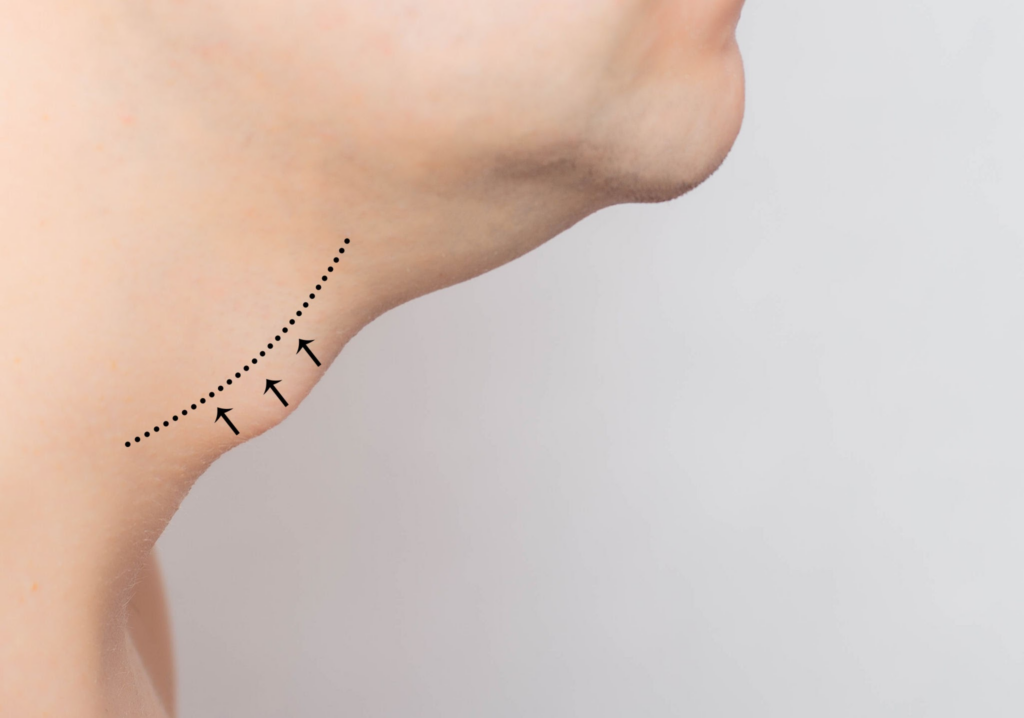Adam’s apple surgery, formally known as chondrolaryngoplasty, is a procedure to reduce the prominence of the thyroid cartilage, commonly known as the Adam’s apple. While it can improve a person’s appearance and align it better with their gender identity, it’s crucial to understand the potential side effects. This article outlines the immediate, short-term, and long-term complications associated with this surgery. It’s important to note that individual experiences can vary significantly, and this information should not replace consultation with a qualified surgeon. There is no net fee associated with this information.

Table of Contents
Immediate Post-Surgery Effects
The immediate period following Adam’s apple surgery is characterized by several effects. Patients typically experience some degree of pain and discomfort, often managed with prescribed pain medication. This pain can range from mild soreness to more significant discomfort, depending on the individual and the extent of the procedure. Swelling around the neck and throat is also common, potentially impacting swallowing and breathing. This swelling is usually temporary and gradually subsides over several days or weeks. Finally, patients may experience some bruising around the surgical site, which is typically resolved within a few weeks. It’s essential to follow the surgeon’s post-operative instructions meticulously to minimize complications and promote healing.
Patients often experience a temporary change in their voice immediately after surgery. This is due to swelling and inflammation around the vocal cords. The voice may sound hoarse, raspy, or weaker than usual. This is a normal temporary effect and should not be cause for alarm. However, any significant or persistent voice changes should be reported to the surgeon immediately. Difficulty swallowing is also a common immediate post-operative effect, as the throat area is swollen and sensitive. This usually improves as the swelling reduces. Soft foods and liquids are recommended in the initial post-operative period to aid in swallowing.
Patients may experience a temporary feeling of tightness or pressure in the throat. This sensation is usually related to the swelling and healing process. It is important to avoid strenuous activities in the immediate post-operative period to allow the body to heal properly. Rest is crucial for recovery, and adhering to the surgeon’s instructions regarding activity levels is critical. Patients should also avoid smoking and excessive alcohol consumption, as these can impede healing. The surgeon will provide detailed instructions on post-operative care, including wound care and medication management.
Numbness or tingling in the area surrounding the incision is also possible. This is often a temporary effect caused by the surgery and the anesthesia. It usually resolves as the healing process progresses. However, any persistent numbness or unusual sensations should be reported to the surgical team. The immediate post-operative period requires close monitoring to ensure prompt identification and management of any potential complications. Regular follow-up appointments are scheduled to assess healing progress.

Swelling and Discomfort
Swelling is a significant and expected side effect after Adam’s apple surgery. The extent of swelling varies from person to person, but it typically peaks within the first few days after the procedure. This swelling can cause discomfort, difficulty swallowing, and a feeling of tightness in the throat. Ice packs applied to the neck can help manage swelling and reduce discomfort. Elevation of the head and neck while resting can also aid in reducing swelling. Pain medication prescribed by the surgeon will help manage any discomfort experienced.
The discomfort associated with swelling can be significant, particularly in the initial days following the procedure. The surgeon will usually prescribe pain relievers to help manage this discomfort. Over-the-counter pain relievers might also be recommended. However, it’s crucial to follow the surgeon’s instructions carefully regarding medication dosage and usage. It’s important to remember that the level of discomfort will gradually decrease as the swelling subsides. Patience and adherence to the post-operative care plan are essential.
The duration of swelling can vary. While some swelling might resolve within a week or two, it can take several weeks or even months for complete resolution in some cases. Factors such as the individual’s healing process, the extent of the surgery, and adherence to post-operative instructions all play a role in the duration of swelling. Regular follow-up appointments with the surgeon allow for monitoring of the healing process and address any concerns. The surgeon will provide guidance on managing swelling and discomfort throughout the recovery period.
It’s important to be patient and understand that swelling and discomfort are normal parts of the healing process. While these side effects can be uncomfortable, they are usually temporary. Focusing on proper rest, nutrition, and following the surgeon’s instructions diligently will contribute to a smoother recovery. Ignoring discomfort or failing to follow post-operative care can potentially lead to complications.

Scarring and Voice Changes
Scarring is an unavoidable consequence of any surgical procedure, and Adam’s apple surgery is no exception. The scar is typically located along the front of the neck, and its appearance will vary depending on individual healing characteristics and the surgeon’s technique. The scar may initially be red and raised, but it usually fades and becomes less noticeable over time. Scar management techniques, such as silicone gel sheeting, may be recommended to minimize scarring.
Voice changes are a potential complication of Adam’s apple surgery. The surgery involves manipulating the thyroid cartilage, which is closely associated with the vocal cords. Temporary hoarseness or changes in vocal quality are common immediately following the surgery. However, in some cases, more persistent or significant voice changes can occur. This can range from subtle alterations in vocal tone to more noticeable changes in pitch or volume. Speech therapy may be necessary in some cases to help restore normal vocal function.
The extent of voice changes is difficult to predict and varies from patient to patient. Factors such as the surgical technique, the extent of cartilage reduction, and individual anatomical variations all play a role. Pre-operative vocal assessments are often conducted to establish a baseline and help manage expectations. Post-operative voice therapy can be beneficial in addressing any persistent voice changes. Regular follow-up appointments with the surgeon and/or a speech therapist allow for monitoring and intervention as needed.
While most voice changes are temporary and improve over time, some individuals may experience permanent alterations in their vocal quality. The risk of permanent voice changes is relatively low, but it’s an important consideration to discuss with the surgeon before undergoing the procedure. Open communication with the surgical team is vital throughout the recovery process to address any concerns regarding scarring or voice changes.
Long-Term Complications & Risks
Long-term complications from Adam’s apple surgery are relatively rare, but they can occur. One potential complication is the development of an infection at the surgical site. While infections are typically treated with antibiotics, severe infections may require further surgical intervention. Adherence to post-operative wound care instructions is vital in minimizing this risk. Regular follow-up appointments with the surgeon allow for early detection and management of any infection.
Another potential long-term complication is the recurrence of the Adam’s apple prominence. This is more likely if the cartilage reduction was insufficient during the initial surgery. A revision surgery may be necessary in such cases. Careful surgical planning and precise technique are crucial in minimizing this risk. The surgeon will discuss the potential for recurrence and the need for revision surgery during the pre-operative consultation.
In rare cases, long-term voice problems can persist despite post-operative speech therapy. These problems can range from persistent hoarseness to difficulty controlling vocal pitch and volume. The underlying cause of these persistent voice changes is typically related to the surgery’s impact on the vocal cords or surrounding structures. Further medical evaluation and management may be required in these instances.
While the risks are generally low, it’s crucial to have realistic expectations and understand the potential long-term complications before undergoing Adam’s apple surgery. A thorough pre-operative consultation with the surgeon is essential to discuss these risks and answer any questions. The surgeon will provide a comprehensive assessment of the risks and benefits of the procedure, tailored to the individual’s specific circumstances. The decision to undergo this surgery should be based on a well-informed understanding of both the potential benefits and the potential long-term risks.
Adam’s apple surgery offers the potential for significant aesthetic and personal benefits, but it’s crucial to fully understand the associated risks and side effects before proceeding. This article provides an overview of potential complications, but individual experiences can vary. Open communication with your surgeon is paramount throughout the entire process, from pre-operative consultation to post-operative follow-up. Remember to always seek advice from a qualified medical professional for personalized guidance and treatment.
Visit Dr.MFO Instagram profile to see real patient transformations! Get a glimpse of the incredible results achieved through facial feminization surgery and other procedures. The profile showcases before-and-after photos that highlight Dr. MFO’s expertise and artistic vision in creating natural-looking, beautiful outcomes.
Ready to take the next step in your journey? Schedule a free consultation with Dr. MFO ( Best Facial Feminization Surgeon for You) today. During the consultation, you can discuss your goals, ask any questions you may have, and learn more about how Dr. MFO can help you achieve your desired look. Don’t hesitate to take advantage of this free opportunity to explore your options and see if Dr. MFO is the right fit for you.









